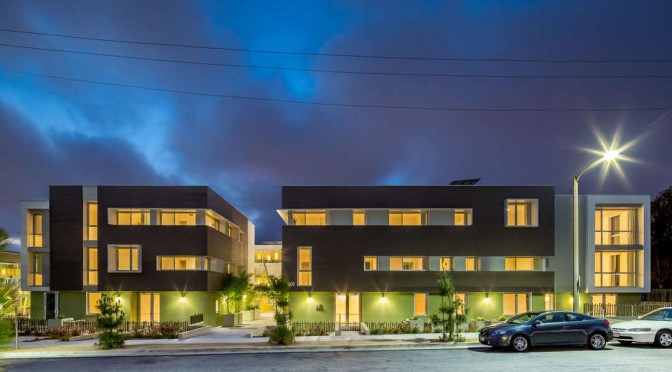
Congregating and connecting with other people has always been an important function of architecture, but today’s public and private spaces are changing to reflect a greater desire for shared experiences and environments.
The recent proliferation of social-centric and dynamic designs appears to reflect a growing appreciation for the fact that these building types can help foster positive incidental functions such as conversation and collaboration. Vishaan Chakrabarti, Principal at SHoP Architects, understands this better than anyone, saying: “Architects have an extraordinarily important role to play to better guide urban growth toward more socially mixed and more innovative cultural ecologies that allow us to inhabit cities the way we want.”
Vienna University by Atelier Hitoshi Abe, Vienna, Austria
Standout examples of such architecture span a plethora of sectors, from education to residential. Overlapping volumes are arranged along the length of the site with shared atriums. By diverting traffic through the atriums, staff, faculty, and students are encouraged to cross paths, congregate, work, and collaborate.”
Homes too can benefit from these qualities, as illustrated by Egan | Simon Architecture with their High Place Apartments in Santa Monica. Numerous interstitial spaces were incorporated to foster communal spirit, inviting people to socialize: “High Place Apartments was built around a series of courtyards designed to bring natural ventilation while promoting community between the units in the building … The open-air corridors connect different buildings so that people can see their neighbors.”
Songpa Micro-Housing by SsD, Seoul, South Korea
Outside the US, this intertwining of public and private space is also bearing fruit, as evidenced by SsD’s innovative Songpa Micro-Housing project in Seoul. As the report explains, the Songpa block cleverly “leverages zoning constraints to use residual space as semi-public shared zones. The residual space forms communal spaces for as many as three units and fosters interactions between neighbors.” Cross-programming is also adopted, resulting in unexpected social richness: “The café in the basement level transforms into a community theater at night.”
Women’s Opportunity Center by Sharon Davis Design, Kayonza, Uganda
Perhaps the best example of all, though, is located in the town of Kayonza in Uganda. Sharon Davis Design produced a beautifully simple solution for the Women’s Opportunity Center, with perforated walls of brick wrapping a circular seat that encourages people to converse face to face in the comfort of great shading and passive ventilation.
Sharon Davis’ project forms a subtle but significant precedent for architects moving forward — when well designed, buildings can do more than simply provide shelter and a space in which to carry out our daily functions. They can bring people together, and better still, get people talking — this is the age of communal spirit in architecture, and cities are growing ever stronger for it.

Leave a Reply